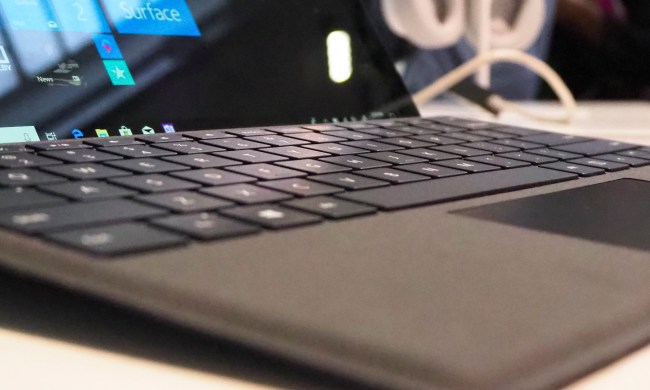
If you’re an Insider on the Fast Ring, then you will be able to download build 17093. This latest iteration brings a number of interesting features, including some game bar improvements, a way to gain some control over diagnostic data, some new graphics features, and a change to system security settings.
Game bar improvements
First up is the Game bar, which has received a user interface makeover to make it easier to find different settings. Some new buttons provide quick access to microphone and camera toggles, and editing the Mixer stream title is easier than ever. There is also now dark and light themes to match your overall Windows 10 look and feel.
Diagnostic data improvements
In an earlier build, Microsoft introduced a new Diagnostic Data Viewer that allows users to see what information is being passed to Microsoft when an issue occurs. Now, you can easily delete that data by heading to Settings > Privacy > Diagnostics & feedback.

Graphics improvement
The biggest changes in build 17093 are focused on the graphical subsystem. To begin with, Microsoft has improved high-dynamic range (HDR) support on those systems that support it, specifically a new calibration tool that can help optimize HDR performance for a better balance between details in darker scenes and details in brighter scenes.

Next, in what will be a boon for anyone using a system with more than one GPU, such as notebooks that offer both integrated Intel HD graphics and a discrete GPU, Windows 10 can now manage which GPU runs when you start various apps.
To use the new feature, just go to Settings > System > Display and scroll down to the “Advanced graphics settings” link. There, you can specify “Power saving” mode to use the most efficient GPU (usually Intel HD graphics) or “High performance” mode to use the fastest GPU (usually the discrete GPU). You make the selection for either classic Windows desktop applications or Windows 10 apps, and the “System default” setting will let Windows 10 decide with GPU is best to use for an app.

If you’re accustomed to using the AMD or Nvidia control panels for these features, then you will want to note that setting an app in Windows 10 Settings will override the vendor control panel. Also, if an app has its own settings, then those will override the Windows 10 Settings configuration.
Microsoft Authenticator App support for Windows 10 S PCs
Microsoft has now built support into Windows 10 S for the Authenticator App, allowing you to use the app to set up your Windows 10 S PC. Essentially, that means that you can now use the Authenticator App on a smartphone while you’re running through the out-of-box experience and thus never need to use your password.

In addition, it’s now possible to never use a password with Windows 10 S. Rather, you can use Windows Hello biometrics or a PIN and never use a password again.
Windows Security improvements
Microsoft has renamed Windows Defender page to Windows Security in the Settings app, as well as redesigned the page to put additional emphasis on the various areas of protection. It’s also introduced a new Account Protection Pillar that protects user identities when signing into Windows, encouraging users to use Windows Hello or a PIN for faster sign in. A Device Security Pillar now provides more status information and a way to manage security features.
Other improvements
There are a host of other improvements in Windows 10 Insider build 17093:
- Eye Control: Windows 10 Fall Creators Update introduced eye-control capabilities that make it possible to use Windows by glancing at your display with supported eye-tracking hardware. Microsoft introduced Eye Control to make navigation easier, accelerate tasks like accessing Start, Timeline, Settings, and more, and allowing users to pause control.
- Bluetooth: Pairing and connecting to certain Bluetooth devices has been streamlined. For example, Windows 10 will now kick off a notification whenever a Surface Precision Mouse is close by and ready to connect.
- Microsoft Edge: The Edge browser has received an enhanced full-screen mode so that hovering at the top of the display in full-screen mode or using touch to drag down from the top of the display will provide access to the address bar and navigation controls. There is also now a clutter-free printing mode that strips out ads and other fluff when printing a page.
As always, there are even more changes in build 17093, along with some known issues that you’ll want to consider before hitting the update button. Head over to the Windows blog for all of the details. If you’re taking part in the current Bug Bash, note that it runs through 11:59 p.m. PT on Sunday, February 11, and so get your feedback in before then.




